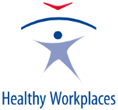Digital platform work
creates new opportunities for businesses and workers, for example for people who might have more difficulties to access the traditional labour market. Simply put, it involves work provided through, on, or mediated by an online platform.
The most common platform business model is the online marketplace for matching labour supply and demand. It often concerns jobs in occupations and sectors such as the transport sector (delivery riders and taxi drivers) and cleaners and handypersons (exposed to chemical products and at high risk for slips, trips and falls). Digital platform workers are managed by algorithms that impact work allocation, compensation and collect worker data that can be used to increase surveillance.
Due to the non-standard working relationships with digital platform operators, risks are increased for digital platform workers. They also have low bargaining power and control over their work. This is obvious in the delivery and transport sectors, where workers are on location, lower skilled, and subject to a high level of platform control.
Platform workers also face isolation, work intensification, long working hours and digital monitoring and surveillance that can lead to high levels of stress. However, their employment status limits their access to protection. Since platform workers are usually self-employed workers, they are responsible for their own OSH. Platforms are not obliged to adopt measures to increase protection of platform workers.
Find out more about how to prevent or minimise the risks associated with digital platform work.
Recommended Resources
Publications
- Digital platform work in the health and social care sector: implications for occupational safety and health
- Workforce diversity and digital labour platforms: implications for occupational safety and health
- Surveillance and monitoring of remote workers: implications for occupational safety and health
- Digital platform work and occupational safety and health: overview of regulation, policies, practices and research
- Digital platform work and occupational safety and health: a review
Cases studies
- Occupational safety and health risks of remote programming work organised through digital labour platforms
- Occupational safety and health risks of parcel delivery work organised through digital labour platforms
- Occupational safety and health risks of online content review work provided through digital labour platforms
- Occupational safety and health risks of handiwork provided through digital labour platforms
- Actions by labour and social security inspectorates for the improvement of occupational safety and health in platform work





